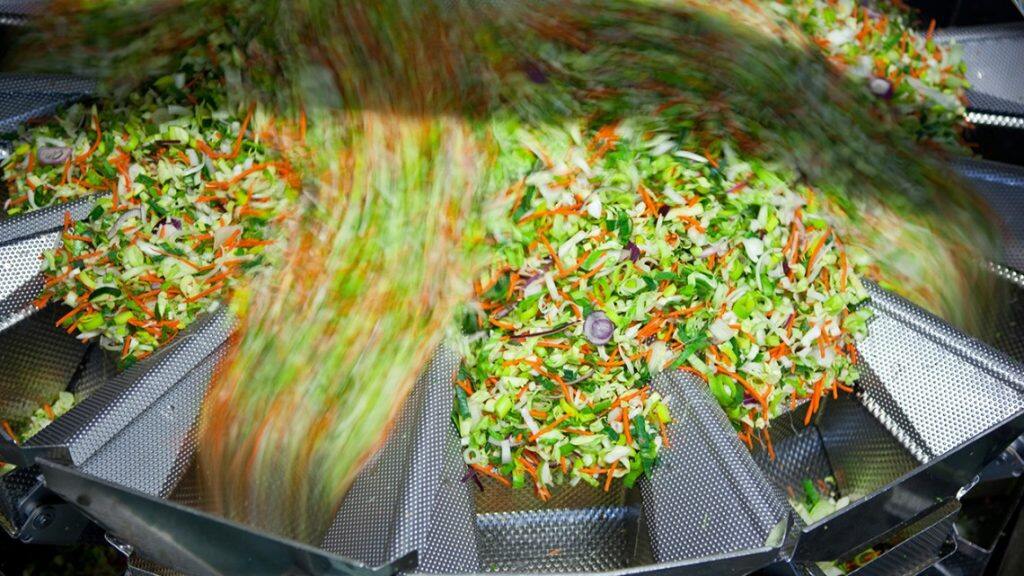As soon as an ear of corn is taken off its stalk, or a potato is pulled from the ground, it travels anywhere from a few miles to across continents, and sometimes undergoes a multitude of processes that transform it into the food we consume.


These miles and processes all contribute to what’s known as the food value chain (FVC), along which, as one might expect, the value of the product increases. However, most of the research and attention thus far paid to FVCs occurs at the ends of the chain – inside the farm gate and at the consumer’s plate.
Less is understood about all of the other links in the FVC, in part due to a lack of standardized data and methods that can be applied universally. Many studies have been done on individual commodities, or in a single country, but coming up with an international method of analyzing FVCs has been elusive until now.
A team of researchers – led by Chris Barrett, the Stephen B. and Janice G. Ashley Professor in the Charles H. Dyson School of Applied Economics and Management, and Miguel Gómez, the Robert G. Tobin Professor at Dyson – has developed the “Global Food Dollar” method, which distributes the consumer’s net purchasing dollar across all farm and post-farmgate activities.
“The Overlooked Magnitude of Post-Farmgate Food Value Chains,” published June 7 in Nature Food, was written, and the method developed, as part of a partnership with the U.S. Department of Agriculture’s Economic Research Service (ERS), led by Patrick Canning, a co-author on the study.
“The key insight, from my perspective, is that the overwhelming majority of the value addition is happening after the farm gate,” Barrett said. “People fall into thinking of food issues as being farm issues. And farm issues are important, but they’re comparatively less important than most people realize. And they’re becoming steadily less important over time.”
Their methodology expands on the ERS’s “food dollar series,” published annually since 1947 but updated by Canning in 2011 to include modern inputs. Gómez has been working with Canning for several years on expanding the U.S. food dollar series to encompass flows of natural resources and environmental impacts, like water of greenhouse gas emissions. Barrett’s recent work on changes in agri-food value chains globally led to this collaboration to develop and apply a new method.
“People really don’t understand how consumer dollars get apportioned, either between owners of land and intellectual property and workers, or between actors in different stages along the value chain,” Barrett said. “And they don’t know how that differs across countries. … How much are you likely to get if you’re a Sysco and you’re thinking of entering a market to mediate wholesale food delivery?”
“We have lots of data on food production and food consumption,” Gómez said, “but not much in between. And it’s important, because 80% to 85% of the value is created beyond the farm.”
For this research, the team used data collected from 2005-15 from 61 countries, representing 90% of the global economy. They estimated the domestic farm share of domestic consumer expenditures on domestically produced “food at home,” “food and tobacco at home” and “food and accommodations away from home,” using an input-output multiplier model.
They found that farmers receive, on average, 27% of consumer expenditure on foods consumed at home, and a far lower percentage, just 7%, on food consumed away from home (in restaurants, for instance). And as countries’ income goes up, the share goes down.
Their findings highlight two constants in food economies:
- As consumer income grows, people gravitate toward towns and further away from farms, and people’s willingness to pay for convenience and other non-nutritive attributes grows, shifting demand patterns; and
- Human physiology dictates that people will always need nutritious food, no matter the price. As a result, the authors wrote, “on-farm productivity gains generally drive down farmgate prices.”
And just as the monetary impacts of the post-farmgate FVC intermediaries are often underappreciated, so too are the impacts on health, the environment and labor. Food processing often adds unhealthy levels of salt, sugar and saturated fats, and these ultra-processed foods are taking an increasingly large share of diets in developing countries, the authors said. Food processing also leaves a large and growing carbon footprint, the authors said, making it harder to adhere to the United Nations’ Sustainable Development Goals, adopted by all U.N. member states in 2015.
And the post-farmgate FVC effect on labor mirrors the economic effect: In 2017, the food service industry accounted for roughly five times as many jobs as did the agricultural sector.
One of the main takeaways, Barrett said, is that more research is needed on all the links in the middle of the value chain.
“The big economic players in the food we consume aren’t actually the primary producers on farms,” Barrett said. “So when we think about food issues … maybe we need to spend a little bit more time thinking about what’s happening in that post-farmgate value chain, with the processors, manufacturers, wholesalers, retailers and restaurants.”
Co-authors included postdoctoral researcher Jing Yi, former postdoc Eva-Marie Meemken (now at the University of Copenhagen in Denmark), and student research assistants Ejin Kim, M.S. ’20, Jiali Liu ’21 and Veronica Mazariegos-Attanasiou, M.S. ’20.
This work was supported by the Cornell SC Johnson College of Business and the USDA ERS. Data are available from the GitHub open data portal.







































